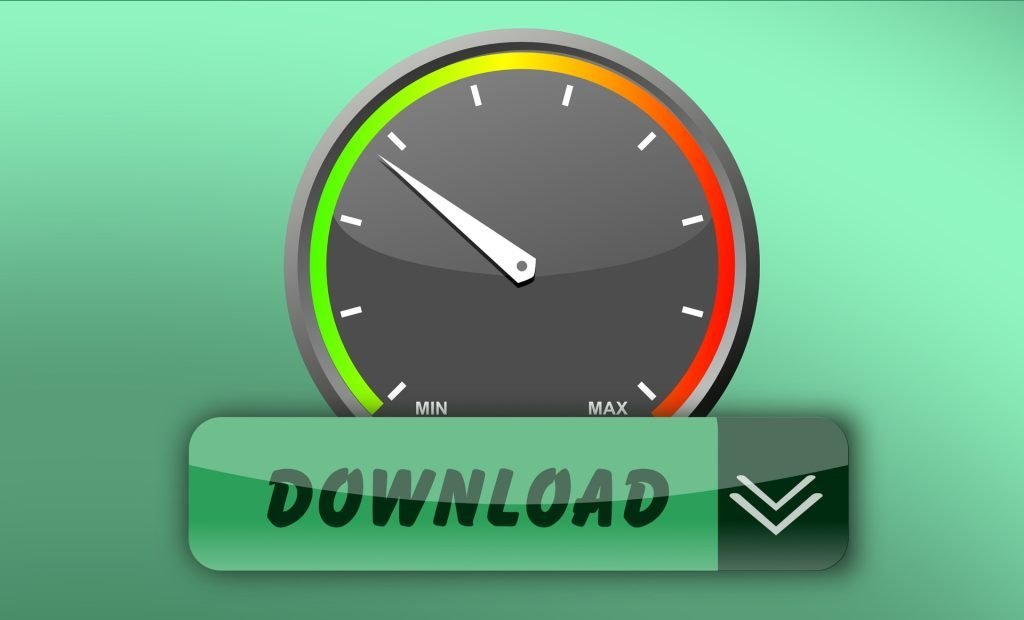Website speed: In the dynamic world of the internet, ensuring your website operates at optimal speed is no longer merely about providing a smooth user experience; it’s a pivotal factor influencing your position on search engine results. Here at California Website Designer Agency, we recognize the profound impact website speed has on SEO performance.
In this consumer-friendly guide, we are able to explore realistic strategies and techniques to beautify your website’s velocity, directly contributing to a massive boost to your seek engine ratings. Our goal is to demystify the complexities, making it accessible for absolutely everyone to recognize and put into effect, making sure your internet site no longer only delights users but additionally excels in the ever-competitive realm of search engine marketing.
The Need for Speed in SEO:
Introduction
Website speed isn’t just about making your site load quickly; it’s a critical element for search engines like Google. In the vast digital landscape, Google uses various factors to decide how high a website should rank. One of these factors is page speed. This means that the faster your website loads, the more favorably Google views it. Imagine your website is like a high-speed train, and Google is more likely to put it on the express track to better rankings if it’s quick to load. So, when we talk about optimizing your website speed, we’re essentially giving your site a turbo boost in the race to top search engine rankings.
The Need for Speed in SEO: The Impact on User Experience
Now, let’s break it down to why this matters for the people visiting your site. In a world where people’s patience is wearing thin, waiting for a slow website to load feels like watching paint dry. Slow-loading websites leads to higher bounce rates – that’s when visitors leave your site without exploring further. Think of it like this: in case your internet site had been a shop, and it took too long for the doorways to open, customers would turn away and look for a quicker front somewhere else. This isn’t pretty much dropping potential clients; it is also telling engines like Google that your content material won’t be as thrilling or relevant.
So, optimizing your internet site pace is like ensuring your store’s doorways swing open rapidly, inviting customers to explore what you need to offer, and that is a game-changer for each person revels in and SEO overall performance.
Strategies for Speed Optimization
1. Optimize Images for Improved Website Speed
Images play a pivotal role in the visual appeal of your website, but they can also be a major factor in slowing down load times. To enhance website speed and overall SEO performance, it’s crucial to optimize images. Imagine your webpage as a puzzle, and each image is a piece. The more pieces you have, the longer it takes to complete the puzzle. By compressing images without compromising qualities more pieces you have, the longer it takes to complete the puzzle.
Try, you reduce the number of pieces and speed up the puzzle assembly, i.e., your webpage loading.
For instance, consider a high-resolution image of a product on your e-commerce site. This image can be optimized by using tools to compress it, reducing its file size without compromising the clarity of the product. Additionally, embracing modern image formats like Web is a savvy move. Web maintains excellent visual fidelity while offering superior compression. This means faster load times for users, contributing to a seamless browsing experience and positively impacting your website’s SEO.
2. Browser Caching: A Speed Boost for Repeat Visitors
Browser caching is like creating a shortcut for your website’s frequent visitors. Enabling this selection allows the browser to keep static documents regionally on the person’s device. Imagine if each time a person visited your web page, they needed to download the identical emblem, photos, and scripts again and again. Browser caching eliminates this redundancy by storing these factors on the consumer’s device after the preliminary go-to. This means that once the consumer returns, the browser can retrieve these documents regionally, drastically lowering the want to fetch them from the server.
For instance, think of your website as a library. The first time a vacationer borrows an eBook, they take it from the cabinets. With browser caching, if the equal traveler returns for any other e-book, they discover it already on their table, saving the time and effort needed to move back to the shelves. Implementing powerful caching techniques is similar to ensuring that your library’s layout is efficient, making it clean for readers to locate what they want speedy. This not simplest improves website pace but also complements the general user enjoyment, contributing to better search engine marketing overall performance.
3. Minimize HTTP Requests for Optimal Website Speed and SEO Performance
When a person visits a website, the browser has to fetch diverse factors like images, scripts, and stylesheets. Each of those elements necessitates a separate HTTP request to the server. Now, think of HTTP requests as delivery trucks – the more trucks you send, the longer it takes to unload and assemble the goods (your webpage). Here’s where the magic of optimizing website speed and SEO performance begins.
Imagine a web page as a Shopping Cart: Consider your webpage as a virtual shopping cart. In this cart, you’ve got images, scripts, and stylesheets – each representing a product. If you send a separate delivery truck for every product, it would take ages to unload and showcase them to your customers. Now, if you pack multiple products into one truck and use a quicker unloading process, you get a faster and more efficient shopping experience.
Combining Files and Asynchronous Loading
To put this into action on your website, combine those individual elements into fewer files. For instance, instead of having separate files for each image, group them together. This consolidation reduces the number of delivery trucks (HTTP requests), making the unloading process speedier. Additionally, use asynchronous loading, which is like having multiple workers simultaneously unpacking your goods. This means that while one element is being fetched, others can load in the background, further enhancing the overall speed of your webpage.
4. Content Delivery Network (CDN)
In the realm of website optimization, the use of a Content Delivery Network (CDN) sticks out as a powerhouse, appreciably contributing to greater internet site speed and progressed SEO overall performance.
Utilizing a CDN entails spreading your internet site’s static content, together with images, stylesheets, and scripts, across a couple of servers strategically positioned internationally. This geographical distribution ensures that when a person accesses your site, the content is delivered from a server nearest to their vicinity. Imagine a CDN as a network of transport hubs, every stocked with a replica of your website’s necessities.
For instance, if a person in New York desires to view your internet site hosted on a server in London, the CDN kicks in. Instead of the consumer’s device fetching each element from the distant server, the CDN directs the tool to the close by CDN server in, say, New York. This no longer most effective notably reduces the time it takes for the content to reach the user however also ensures a smoother enjoyment, irrespective of in which they’re within the global.
In simpler terms, a CDN acts like an efficient courier carrier, making sure your internet site’s factors get to the consumer as fast as possible. This is not just about pace; it’s approximately reliability too.
By minimizing the physical distance data needs to travel, a CDN fortifies your website against potential slowdowns, contributing to a more robust and dependable online presence. This improvement in website speed and reliability directly translates to a positive impact on your overall SEO performance, propelling your site towards higher rankings in search engine results.
5. Optimize Code for Improved Website Speed
In the dynamic realm of the internet, the backbone of a speedy website lies in its code. When we say “code,” we’re referring to in the back-of-the-scenes commands that make your internet site function. Imagine it like the wiring in your property; if it’s organized and green, the whole lot runs smoothly.
Here’s why optimizing your code is pivotal for both website speed and SEO performance.
Clean and Efficient Code:
When we speak about clean code, we imply it is tidy, well-organized, and free of needless litter. Think of it like cleaning your workspace – a neat table makes it easier to discover what you need. In the virtual world, easy code guarantees that your website’s commands are streamlined and clean for browsers to recognize.
Minifying CSS, JavaScript, and HTML Files:
Now, let’s get into the specifics. Minifying is like compressing files to make them smaller and less complicated to handle it’s like packing a suitcase efficiently for a trip. By minifying CSS, JavaScript, and HTML files, we’re essentially removing any extra baggage – unnecessary characters, spaces, or lines that browsers don’t need to read. This results in smaller file sizes, making your website lighter and quicker to load.
Improving Load Times:
Imagine waiting for an elevator. If it takes too long to arrive, it’s frustrating. The same goes for your internet site – if it takes too long to load, visitors may go away earlier than they even see your content material. Minifying your code is like giving your website an express elevator, reducing the time it takes for pages to appear.
Regular Auditing and Optimization:
Just like your car needs regular check-ups to run smoothly, your website’s code requires periodic audits. This means reviewing the cod easily to ensure it’s still in top shape. Are there any new technologies or methods that can further boost speed? Regular optimization is a proactive measure, ensuring your website stays fast and responsive as digital landscapes evolve.

Measuring and Monitoring Website Speed
1. Google Page Speed Insights: Unveiling the Power of Speed Optimization
Google’s Page Speed Insights stands as a powerful ally in your quest for a faster website and improved SEO performance. This user-friendly tool evaluates your website’s speed and delivers actionable insights to propel your optimization efforts.
Understanding the Score:
When you input your website’s URL into Page Speed Insights, it generates a score based totally on diverse performance metrics. The rating, starting from zero to 100, reflects how well your internet site performs in phrases of pace. A higher score shows higher optimization, at the same time as a lower score indicates regions for improvement.
Actionable Recommendations:
One of the standout features of Page Speed Insights is its ability to provide practical recommendations to enhance your website’s speed. These recommendations, often categorized as high, medium, or low priority, guide you in addressing specific issues affecting your site’s performance.
Real-Time Analysis:
Page Speed Insights offers real-time analysis, ensuring you receive up-to-date information about your website’s speed. Regularly checking your website’s score through this tool is essential for staying proactive in the ever-evolving landscape of SEO.
Addressing Identified Issues:
Upon analysis, Page Speed Insights highlights specific issues impacting your website’s speed. These could include uncompressed images, render-blocking resources, or inefficient code. Addressing these issues promptly is crucial for optimal SEO performance.
Easy-to-Understand Metrics:
Page Speed Insights presents its findings in a user-friendly manner, making it accessible to website owners of all technical backgrounds. The tool breaks down complex performance metrics into clear, actionable steps, empowering you to enhance your website’s speed without delving into intricate technical details.
Google’s Page Speed Insights is not just a tool; it’s your strategic partner in the journey towards a faster, more optimized website. By regularly checking your website’s score and implementing the recommended improvements, you pave the way for improved SEO performance and a seamless user experience. Stay ahead in the digital realm with insights that matter.

2. Website Performance Testing Tools: Enhancing Your Optimization Strategy
Leveraging Diverse Tools for a Holistic View
In the pursuit of optimal website speed and enhanced SEO performance, it’s crucial to go beyond Google’s Page Speed Insights. While Page Speed Insights provides valuable insights, incorporating additional tools like GTmetrix or Pingdom can offer a more comprehensive understanding of your website’s performance.
GTmetrix, for instance, goes beyond simple metrics and affords a detailed breakdown of your page’s loading time, including the time it takes for every element to load. It assigns grades to numerous components of your website, consisting of photo optimization and script management, permitting you to pinpoint precise regions that need interest. This granular evaluation empowers you to make centered optimizations for quicker, extra-streamlined user enjoyment.
Pingdom, on the other hand, not only measures your website’s speed but also provides a waterfall chart that visually represents how each element contributes to the overall load time. This visualization is especially helpful in identifying bottlenecks and understanding the sequence of events during the loading process. By recognizing which elements may be causing delays, you can prioritize improvements to achieve optimal website speed.
Identifying Areas for Improvement
These performance testing tools excel in pinpointing areas for improvement, making them invaluable assets in your SEO toolkit. They evaluate factors like server response time, browser rendering, and the efficiency of your code. By analyzing the data generated by these tools, you can identify specific elements that may be slowing down your website.
For instance, if GTmetrix indicates a lengthy server response time, it may be time to consider upgrading your hosting or optimizing server configurations. On the other hand, if Pingdom highlights prolonged script execution, revisiting and optimizing your code becomes a priority.
Ensuring a Comprehensive Optimization Strategy
By utilizing a combination of tools, you ensure a well-rounded optimization strategy. Each tool offers unique insights, and the collective data allows you to create a tailored plan for improving website speed and overall SEO performance. Remember, the goal is not just to achieve a high score but to enhance the user experience and meet the stringent demands of search engine algorithms.
Integrating tools like GTmetrix and Pingdom into your optimization routine provides a deeper understanding of your website’s performance. The actionable insights gained enable you to make informed decisions, resulting in a faster, more efficient website that not only pleases users but also satisfies the intricate criteria set by search engines for improved SEO.

Conclusion
At California website designer agency, we emphasize the symbiotic relationship between website speed and SEO performance. By implementing the techniques mentioned in this manual, you now not only decorate user pleasure but also roll your internet site favorably in seek engine rankings. Speed isn’t just a luxury; it is a need in the aggressive online panorama. Stay in advance with the aid of prioritizing the optimization of your internet site’s speed for higher SEO performance.
Frequently Asked Questions
Q1. Why does website speed matter for SEO?
A: Website speed is a crucial factor for SEO because search engines prioritize delivering the best user experience. Faster-loading websites leads to lower bounce rates, increased user engagement, and ultimately, higher rankings in search results.
Q2. How can I check my website’s velocity?
A: You can use gear like Google Page Speed Insights, GTmetrix, or Pingdom to evaluate your internet site’s pace. These gear provide precise analyses and actionable insights to help you perceive regions for development.
Q3. What is the impact of sluggish website velocity on a person’s experience?
A: Slow website velocity negatively impacts a person’s enjoyment by means of inflicting longer loading times, better jump costs, and decreased user engagement. Visitors are much more likely to abandon an internet site that takes too long to load.
Q4. What role do images play in website speed?
A: Images can significantly impact website speed due to their file sizes. Optimizing images by compressing them without compromising quality and using modern formats like the Web can contribute to faster page loading.
Q5. How does browser caching improve website speed?
A: Browser caching allows static files to be stored locally on a user’s device, reducing the need to fetch them from the server on subsequent visits. This minimizes loading times and enhances overall website speed.
Q6. What is the significance of a Content Delivery Network (CDN) in speed optimization?
A: A CDN distributes your website’s static content across multiple servers globally. This ensures faster delivery of content to users, regardless of their geographical location, leading to improved website speed and SEO performance.
Q7. Why is code optimization important for website speed?
A: Clean and efficient code reduces file sizes, making your website faster to load. Minifying CSS, JavaScript, and HTML files by removing unnecessary characters is essential for maintaining optimal website speed.
Q8. How often should I monitor my website’s speed for SEO purposes?
A: Regular monitoring is key. Check your website’s speed using tools like Google Page Speed Insights or GTmetrix at least monthly. Address any issues promptly to ensure consistent SEO performance.
Q9. Can a slow website impact my search engine rankings?
A: Yes, search engines, especially Google, consider website speed as a ranking factor. A slow website may be ranked lower compared to faster-loading competitors.
Q10. What steps can I take to improve website speed if my site is slow?
A: Start by optimizing images, enabling browser caching, minimizing HTTP requests, utilizing a CDN, and ensuring clean code. Use tools like GTmetrix and Pingdom to identify specific areas for improvement and create a comprehensive optimization strategy.







